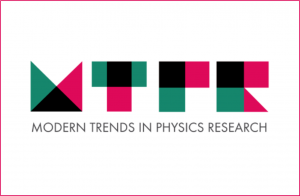"Spin-wave nonreciprocity"
Date: November 30, 2022 , 13:00 – 14:00
Speaker: Prof. Pedro Landeros
Affiliation: Departamento de Física, Universidad Técnica Federico Santa María, Valparaíso, Chile
Link to the MSTeams meeting
Meeting ID: 348 938 078 420
Passcode: G8QS2x
Download Teams | Join on the web
The nonreciprocity of wave phenomena describes the situation in which the dispersion relation depends on the sign of the wave vector. That is, waves propagating in the opposite direction can exhibit different wavelengths for the same frequency and vice versa. As a broken time-reversal symmetry creates nonreciprocity related to wave propagation, in spin-wave data processing, elementary excitations in magnetic systems are considered a promising route toward low-power electronics since their spread does not involve charge transport. Consequently, breaking the time invariance in spin wave scattering to a significant degree is of great relevance. The nonreciprocity of spin waves can be induced by (i) asymmetric exchange interactions (Dzyaloshinskii-Moriya), present in non-center-symmetric crystals and thin films in contact with a heavy metal layer with strong spin-orbit coupling. Also, by (ii) dipolar interactions, either of a coupled magnetic bilayer separated by a nonmagnetic layer, in a system with graded magnetization, or in curved magnets. In both cases, the nonreciprocity in frequency scales linearly with layer thickness for small wavenumbers. However, for the coupled bilayer case and a graded system, the nonreciprocity in frequency shows a maximum value and then decreases for more significant wave vectors. It is also found that the frequency shift of two spin waves propagating in opposite directions improves markedly when an antiparallel equilibrium state is produced. The study is carried out through analytical calculations complemented by micromagnetic simulations and, in some cases, with experiments.
[1] D. Cortés-Ortuño and P. Landeros, Influence of the Dzyaloshinskii-Moriya interaction on the spin-wave spectra of thin films, J. Phys.: Condens. Matter 25, 156001 (2013).[2] S. Tacchi, R. E. Troncoso, M. Ahlberg, G. Gubbiotti, M. Madami, J. Åkerman, and P. Landeros, Interfacial Dzyaloshinskii-Moriya interaction in Pt/CoFeB films: effect of the heavy-metal thickness, Phys. Rev. Lett. 118, 147201 (2017).
[3] R. A. Gallardo, D. Cortés-Ortuño, T. Schneider, A. Roldán-Molina, Fusheng Ma, R. E. Troncoso, K. Lenz, H. Fangohr, J. Lindner, and P. Landeros, Flat bands, indirect gaps, and unconventional spin-wave behavior induced by a periodic Dzyaloshinskii-Moriya interaction, Phys. Rev. Lett. 122, 067204 (2019).
[4] V. Sluka, T. Schneider, R. A. Gallardo, A. Kakay, M. Weigand, T. Warnatz, R. Mattheis, A. Roldan-Molina, P. Landeros, V. Tiberkevich, A. Slavin, A. Erbe, A. Deac, J. Lindner, J. Raabe, J. Fassbender, and S. Wintz, Emission and propagation of 1D and 2D spin waves with nanoscale wavelengths in anisotropic spin textures, Nat. Nanotech. 14, 328 (2019).
[5] R. A. Gallardo, T. Schneider, A. K. Chaurasiya, A. Oelschlägel, S. S. P. K. Arekapudi, A. Roldán-Molina, R. Hübner, K. Lenz, A. Barman, J. Fassbender, J. Lindner, O. Hellwig, and P. Landeros, Reconfigurable spin-wave non-reciprocity induced by dipolar interaction in a coupled ferromagnetic bilayer, Phys. Rev. Appl. 12, 034012 (2019).
[6] A. Barman et al., The 2021 Magnonics Roadmap, J. Phys.: Condens. Matter 33, 413001 (2021).
Chairman: Prof. Jarosław W. Kłos
